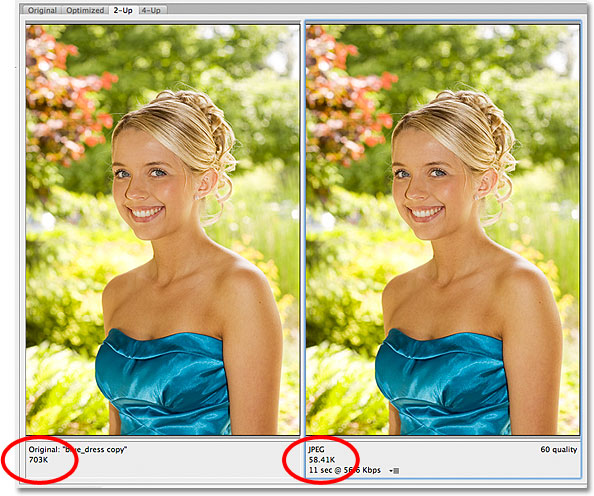Mastering Web-Friendly Imagery: A Comprehensive Guide to Saving Photos for Email or the Web in Photoshop CS5

Introduction:
In the digital age, the ability to share high-quality images quickly and efficiently is paramount. Adobe Photoshop CS5, a venerable tool in the realm of digital image editing, provides users with a plethora of options for saving photos optimized for email or web use. This comprehensive guide explores the intricacies of the saving process, offering insights into the various file formats, compression techniques, and best practices within Photoshop CS5 to ensure that your images retain their visual integrity while being web-friendly.
Understanding the Importance of Web Optimization:
Sharing photos online comes with the challenge of striking a balance between visual quality and file size. Optimizing images for the web or email is crucial to ensure faster load times, reduced bandwidth usage, and an overall seamless user experience.
- Web-Optimized File Formats:
- Photoshop CS5 supports several file formats suitable for web use. JPEG, PNG, and GIF are the most common, each offering a unique set of features and use cases.
- JPEG for Photographic Content:
- The JPEG format is widely used for photographs due to its capability to compress complex images without significant loss of quality. Photoshop CS5 allows users to fine-tune JPEG compression settings to achieve the desired balance between file size and image fidelity.
- PNG for Transparency and Sharpness:
- PNG is an ideal choice when transparency or sharp edges are essential. Photoshop CS5 supports both PNG-8 (indexed color) and PNG-24 (true color with alpha channel), catering to different needs in web design and digital art.
- GIF for Simple Graphics and Animation:
- GIF is suitable for simple graphics and low-color images, and it supports animation. Photoshop CS5 offers options to create GIFs with optimized palettes and frame delays, making it a versatile choice for certain web scenarios.
Efficient Exporting Techniques in Photoshop CS5:
Photoshop CS5 introduces a range of tools and features that streamline the process of exporting images for web or email, ensuring that users can maintain control over the quality and file size of their photos.
- Save for Web & Devices:
- The “Save for Web & Devices” feature in Photoshop CS5 is a dedicated tool for optimizing images. It provides a real-time preview of the compressed image, allowing users to adjust settings such as quality, format, and size before saving.
- Batch Processing for Productivity:
- For users dealing with multiple images, the batch processing capabilities of Photoshop CS5 come in handy. This feature allows for the efficient application of the same export settings to a batch of photos, saving time and maintaining consistency.
- Choosing the Right Compression:
- When saving images for the web, striking the right balance between file size and image quality is crucial. Photoshop CS5 allows users to adjust compression settings for JPEGs and choose the number of colors for GIFs, ensuring optimal results for different types of content.
Optimizing Images for Email in Photoshop CS5:
Sending images via email requires additional considerations to ensure that attachments are manageable in size without compromising the visual appeal of the photos. Photoshop CS5 provides tools to address these concerns.
- Resizing for Email:
- Before saving images for email, resizing is often necessary to ensure that attachments are not overly large. Photoshop CS5’s image resizing options allow users to maintain proportionality while specifying pixel dimensions or percentages.
- JPEG Compression for Email:
- When saving images for email, opting for JPEG format with moderate compression is a practical choice. Photoshop CS5’s “Save for Web & Devices” feature enables users to find the right balance between file size and image quality for efficient email sharing.
Advanced Techniques for Web-Optimized Imagery:
For users seeking to delve deeper into web optimization, Photoshop CS5 offers advanced techniques and features that cater to specific needs and scenarios.
- Sprite Sheets for Efficient Web Design:
- Photoshop CS5 facilitates the creation of sprite sheets, a technique commonly used in web design to combine multiple images into a single file. This reduces server requests and enhances website performance.
- CSS and Image Slicing:
- Photoshop CS5 supports image slicing, allowing users to divide a design into sections. This feature is particularly useful for web designers who want to create layouts with HTML and CSS, optimizing each section individually.
- Embedding Metadata for SEO:
- When saving images for the web, embedding metadata can enhance search engine optimization (SEO). Photoshop CS5 allows users to include information such as keywords, copyright details, and descriptions within the image file.
Conclusion:
Mastering the art of saving photos for email or the web in Photoshop CS5 is an essential skill for photographers, designers, and anyone involved in digital content creation. This comprehensive guide has delved into the fundamental principles, tools, and advanced techniques within Photoshop CS5 to empower users to optimize their images effectively. By understanding the nuances of file formats, compression settings, and efficient exporting processes, individuals can strike the perfect balance between visual quality and web-friendly file sizes, ensuring a seamless and engaging online experience for viewers around the world. As the digital landscape continues to evolve, the knowledge gained from this guide positions users to navigate the challenges of web optimization with confidence and creativity.




